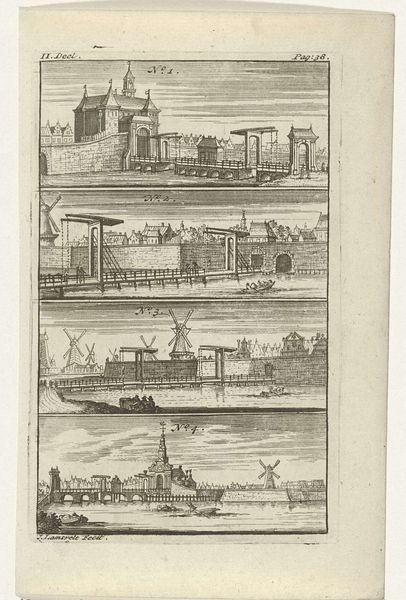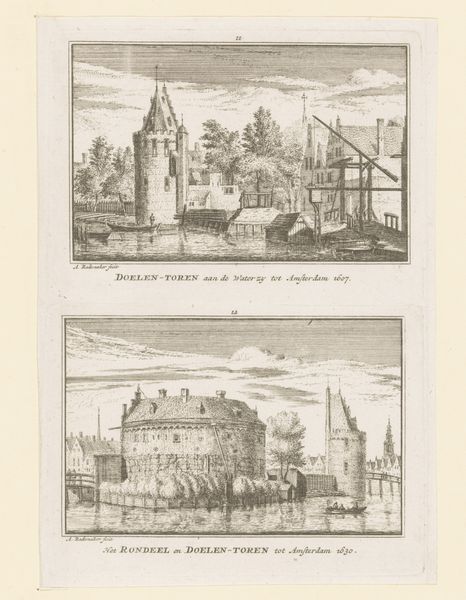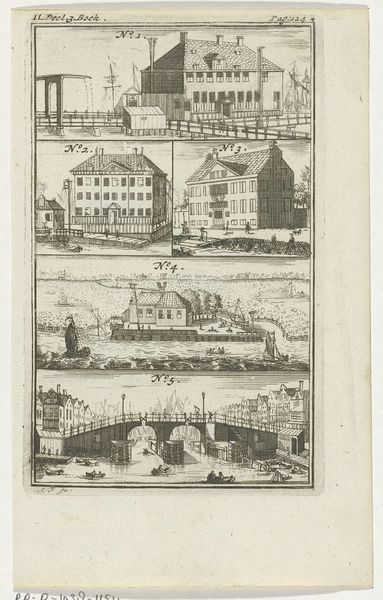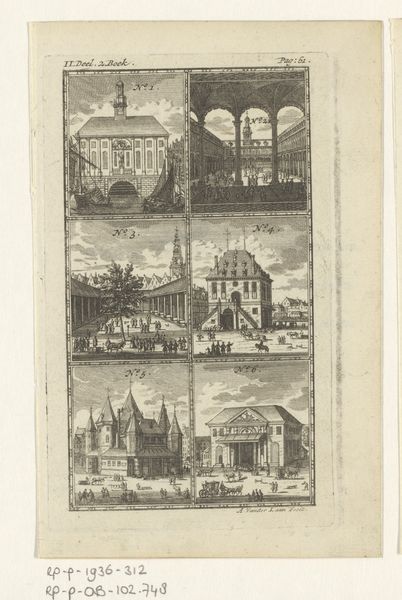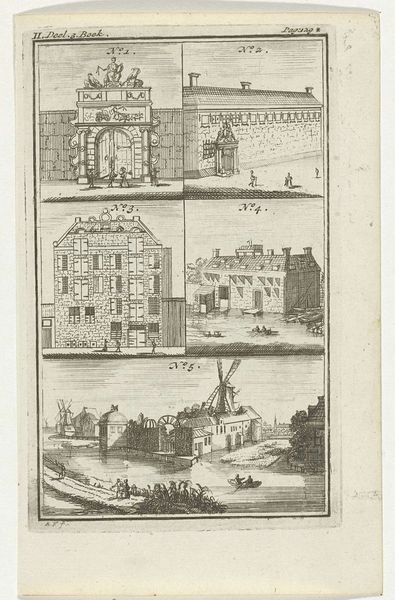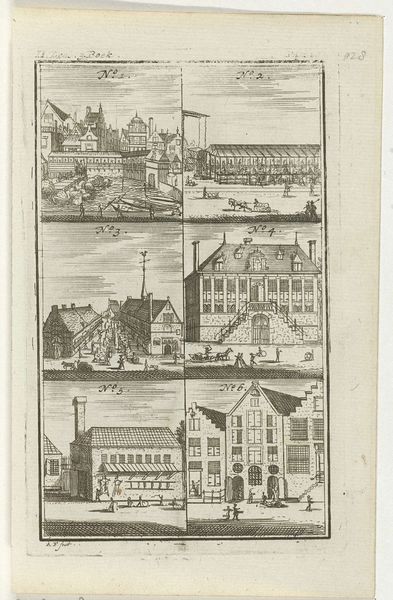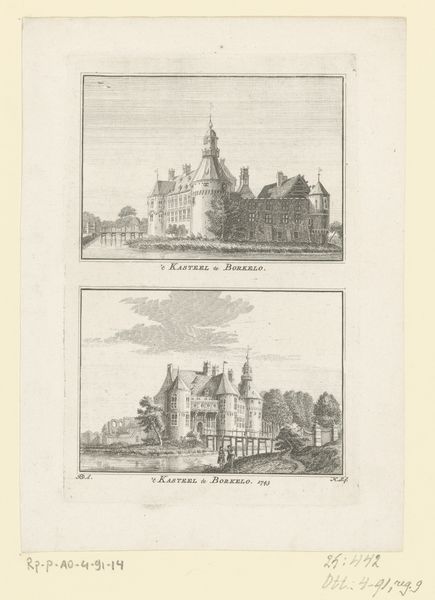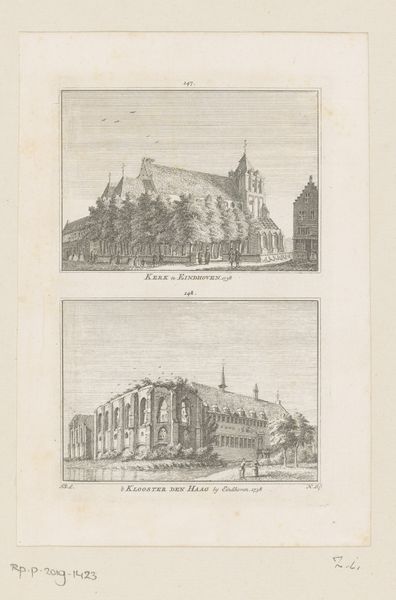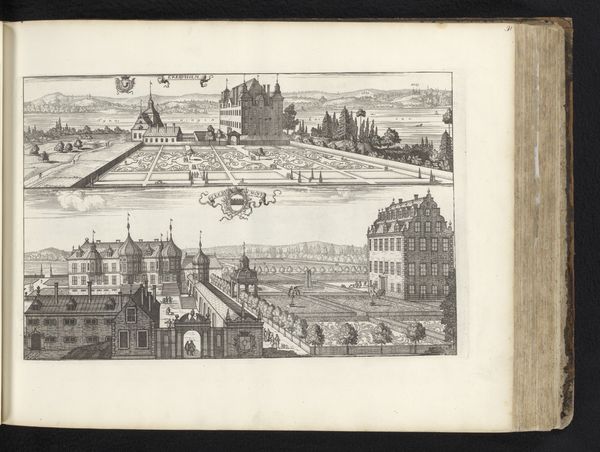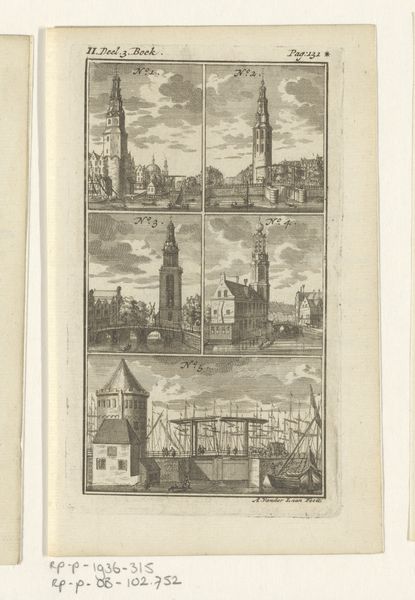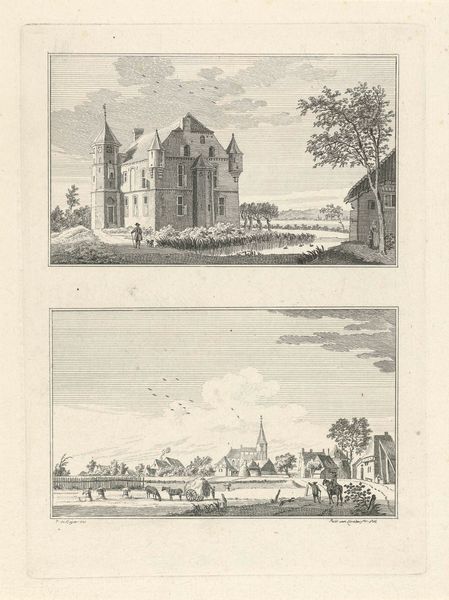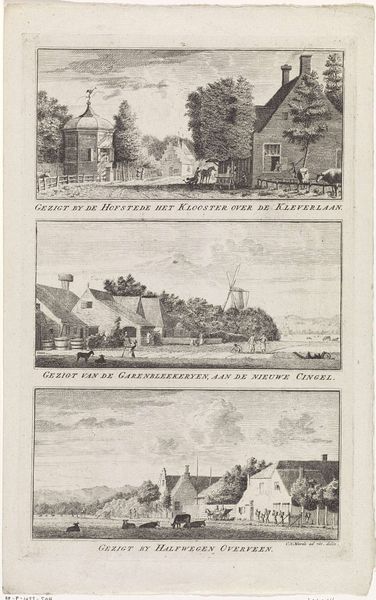
drawing, print, ink, engraving, architecture
#
drawing
#
baroque
#
dutch-golden-age
# print
#
pen sketch
#
ink
#
cityscape
#
engraving
#
architecture
Dimensions: height 128 mm, width 79 mm
Copyright: Rijks Museum: Open Domain
Curator: Ah, here's Jan Lamsvelt’s "Vier verschillende poorten te Amsterdam," or "Four Different Gates in Amsterdam," created in 1723. What’s your take? Editor: Immediate thoughts? It feels almost dreamlike, despite its architectural rigidity. The way he's stacked those vignettes—it's like flipping through old memories of a city. I feel like I’m peering into different facets of Amsterdam's soul, one bridge at a time. Curator: Lamsvelt captured these cityscapes using pen, ink, and engraving, techniques emblematic of the Dutch Golden Age. It’s a detailed look into Amsterdam's infrastructure, showing how crucial waterways and access points were to the city's identity and function. Notice how each gate varies in style, suggesting different periods and purposes? Editor: Exactly! The linear precision emphasizes function but there is also a dance to these gateways. One, with its arched elegance, speaks of trade; another, squatter, hints at military defense. Each one with that little glint of a spire pointing to something grander… They give me such a whimsical feeling of an architectural journey. It is just an objective rendering but, oh, does it sing a quiet little story. Curator: The choice to present them all together on one page, as distinct yet related entities, echoes the broader societal harmony idealized in the Dutch Republic at that time. Prints like these democratized access to views of the city, influencing civic pride and tourism, serving almost as postcards from Amsterdam. Editor: So true. To possess this small window into Amsterdam must have felt a bit revolutionary, too. Look at the line work again – incredibly disciplined. It makes me think how artists become unintentional historians of emotional landscapes. These gates, which feel almost solemn, weren't simply brick and mortar; they were the keepers of the collective memories and expectations of that culture. What I like best about Lamsvelt’s art is how something so specific – a few bridges - could speak of the whole big, beautiful idea of a place and time. Curator: Agreed. This piece serves as an unassuming tribute, allowing us to contemplate the fluid dialogue between space, culture, and self.
Comments
No comments
Be the first to comment and join the conversation on the ultimate creative platform.
